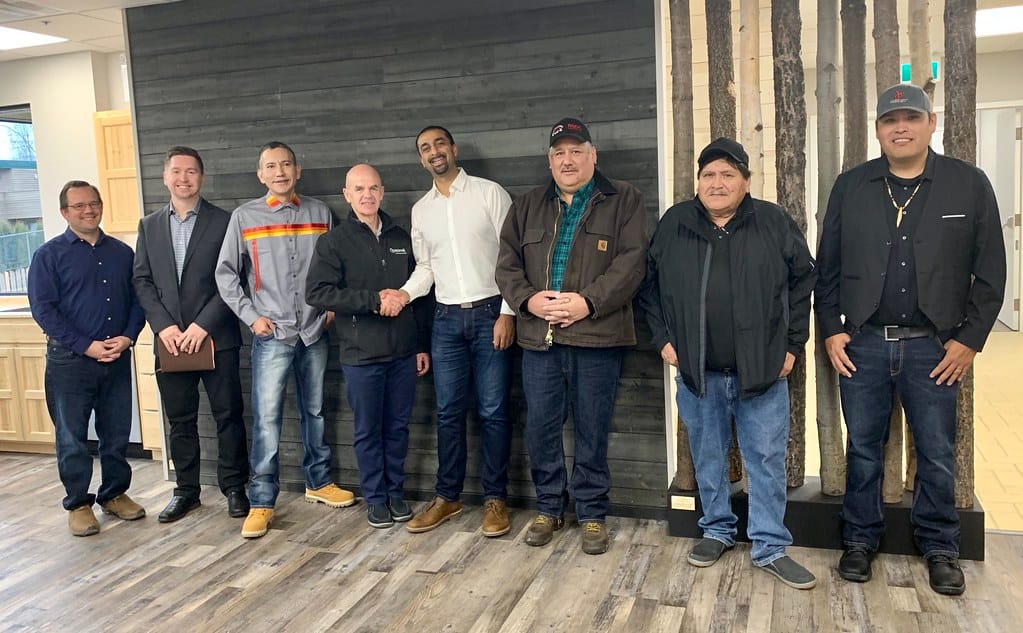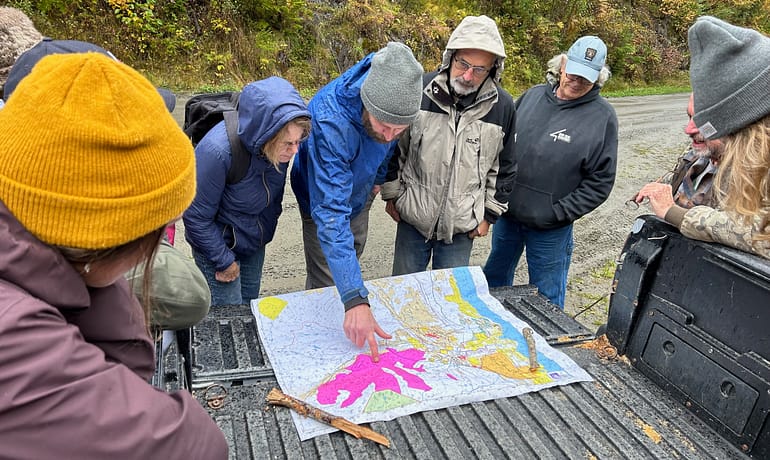Local and Indigenous governments and local forestry stakeholders will benefit from increased participation opportunities in the forest sector under the new sharing agreement, called apportionment, for the Quesnel Timber Supply Area. Mandates are being developed to offer community forest volume and to distribute allowable annual cut volume for First Nations. An invitation to apply for a community forest licence is anticipated to be extended to interested partnerships in spring 2020.
“Today’s announcement gives communities and Indigenous Nations in the area a greater voice in local forest sector management, so they can remain resilient when facing challenges like the ones we are experiencing now,” said Ravi Kahlon, Parliamentary Secretary for Forests, Lands, Natural Resource Operations and Rural Development.
The apportionment was announced by Kahlon at the Quesnel Forestry Innovation Centre. He was joined by Bob Simpson, mayor of Quesnel, and representatives from the Southern Dakelh Nation Alliance, ?Esdilagh First Nation and C&C Wood Products.
The apportionment is a vision of how government would like to see the allowable annual cut of a management unit distributed amongst the forms of agreement. It categorizes, by licence type, the breakdown of available volume within the allowable annual cut of a timber supply area that has already been determined by the chief forester or deputy chief forester.
“Quesnel and local Indigenous communities have been leaders in searching for solutions to current challenges faced by B.C.’s Interior forest sector,” said Doug Donaldson, Minister of Forests, Lands, Natural Resource Operations and Rural Development. “With this apportionment decision now in place, I encourage local and Indigenous governments and forestry stakeholders to begin work on partnerships for possible future business opportunities.”
On June 16, 2017, Diane Nicholls, chief forester, announced that the allowable annual cut for the Quesnel Timber Supply Area was 2,607,000 cubic metres, with harvest maximums of 127,000 cubic metres from deciduous tree-leading stands, 1.25 million cubic metres from living trees and the remainder to be harvested from dead trees.
The new apportionment supports three key government objectives of supporting Indigenous reconciliation, supporting community involvement in local resource management and forest sector diversification to enhance economic stability in the area.
Effective Jan. 1, 2020, the apportionment breaks down as follows (in cubic metres):
- Replaceable forest licences (generally, held by larger licensees) – 1,237,548 (662,500 live)
- Non-replaceable forest licences – 599,952 (95,000 live; 100,000 deciduous)
- First Nations woodland licence – 162,500 (all live)
- BC Timber Sales – 500,000 (250,000 live)
- Community forest agreement – 77,000 (50,000 live; 27,000 deciduous)
- Forest service reserve – 30,000 (all live)
Mandates are being developed to offer community forest volume and to distribute allowable annual cut volume for First Nations. An invitation to apply for a community forest licence is anticipated to be extended to interested partnerships in spring 2020.
Once a community forest agreement, First Nations woodland licence or woodlot licence is established, the supporting Crown land and allowable annual cut are removed from the timber supply area and are not tracked in the apportionment system.
Related Post
Province increases funding for community forest wildfire risk reduction
News Release We are pleased to announce that the
BC introduces new measures on old growth, innovation, forest stewardship
New announcement on process and funding for policy reforms



